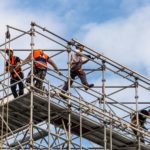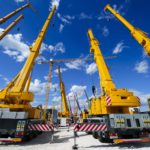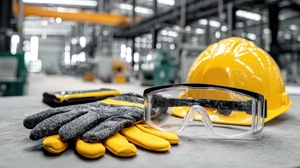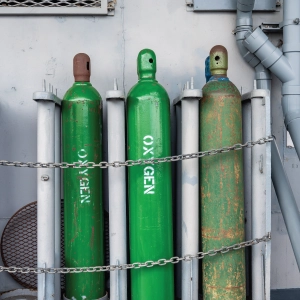Protecting Workers in Bad Weather Conditions

Raging hurricanes, storms, and generally unfavorably windy and wet weather conditions are occurring more and more each year. These extreme weather conditions pose a threat to not only the public but to businesses necessitating employers to provide a safe working environment to employees. As such, employers should prepare for the hazards associated with adverse weather conditions that may require special facilities and safety equipment being provided to employees, or in some instances, work stoppage to ensure the safety and health of workers. Wet weather and high wind conditions can pose a greater threat to employees working in the construction, mining, oil and gas, and shipbuilding industries. For instance, workers in the construction industry are bound to work in open spaces, at heights, with electrical equipment and metals, in excavation areas and trenches, and also handle hazardous materials as part of their work tasks, thereby exposing them to a myriad of safety hazards.
Protecting workers must, therefore, be a priority for employers who must adhere to the guidelines as set out by OSHA regulations and ensure a safe and healthy workplace for employees.
Hazards Associated with Unfavorable Weather Conditions
There are many adverse weather condition hazards associated with bad weather that depend on the work task of the workers. Most of these hazards would result in health hazards to workers and can also lead to workplace fatalities. Let us quickly review a few hazards that workers would be exposed to.
- Being struck by lightning
- Electrocution
- Slipping and Tripping
- Floods
- Drowning
- Loss of balance
- Being unable to leave a job site
- Falls and related injuries
- Falling objects
- Cold Stress
Below are several situations that require employers to protect workers and safeguard them against the hazards associated with windy and stormy weather.
 Working on Scaffolds
Working on Scaffolds
Many construction workers are bound to work on scaffolds while carrying out their job tasks. This exposes them to many of the hazards listed above, making the employer responsible for providing safe working conditions for employees. It is worth noting that the OSHA standard on scaffolding prohibits workers from working on scaffolds during high wind conditions and in wet weather. However, the standard does provide some leeway by allowing workers to do so if a competent person has deemed it safe to work on a scaffold, and workers are protected by a personal fall arrest system or windscreens.
 Working at Heights / Fall Protection
Working at Heights / Fall Protection
Workers working at heights are endangered due to the adverse weather elements. They can be struck by lightning or lose balance due to raging winds. Thus, protecting workers who work at heights should be a priority for employers.
Working in Open Spaces
Often work tasks require employees to work in open spaces. This is especially true for workers in the construction industry and those involved in roadworks, and even window cleaners of high-rise buildings. Business organizations involved in such operations must have in place adequate worker protections to ensure their health and safety during adverse weather conditions ensuring they are protected from falls, falling objects, and even electrocution if in proximity to metals.
 Working with Electrical Equipment
Working with Electrical Equipment
Workers must be made aware of the dangers of working with electrical equipment during storms. If required, equip workers with equipment that is suitable for use in wet weather conditions. More importantly, protect workers by requiring them to wear rubber gloves and rubber-soled shoes that do not conduct electricity. Ensure workers keep the required distances from powerlines and open electrical equipment.
 Working with Heavy Equipment and Machinery
Working with Heavy Equipment and Machinery
During bad weather, visibility is an issue. Hence, using heavy equipment and machinery can be dangerous as this may increase the possibility of accidents occurring, thereby raising the risks to worker safety.
 Working in Excavations and Trenches
Working in Excavations and Trenches
When it is raining, excavations and trenches must be safeguarded against the threat of flooding and soil erosion. In the case of deep excavation, a landslide could also be a threat. Workers must be trained to know the different hazards they are exposed to and what to do to overcome such hazards.
 Working in Confined Spaces
Working in Confined Spaces
Workers working in confined spaces would also be at risk during bad weather as entry points may become wet and slippery, or water may seep through into the confined space causing increased danger when working in such areas. If these confined spaces contain electronic equipment, powerlines, live wires, or even have water or sewerage pipelines passing through, there would be additional risks to workers' health and safety during storms. Risk assessments must also be made on the possibility of the confined space atmospheres becoming toxic or oxygen levels reducing.
We offer a comprehensive array of OSHA-compliant safety training courses that are designed to equip workers with the knowledge and skills necessary to navigate hazardous waste operations and emergency response situations safely, including adverse weather condition hazards. With a focus on compliance with OSHA regulations,
How to Protect Workers?
An employer must identify the relevant workplace hazards that can take place due to weather-related emergencies by undertaking a hazard assessment and then making sure to implement relevant worker protections as and when required as weather conditions deteriorate. Using the Hierarchy of Controls, to determine the best methods to protect workers, employers can establish workplace emergency procedures to suit each worksite's requirements. Employers are free to choose a combination of elimination, substitution, workplace practices, engineering controls, administrative control, or personal protective equipment to protect workers against the hazards posed by high winds, storms, and other wet weather conditions.
An Emergency Action Plan
The most important aspect of protecting workers during adverse weather is for employers to be prepared with relevant preparedness, emergency, and response plans. According to 29 CFR 1910.38 standard, OSHA requires all employers to have in place a written emergency action plan that includes emergencies caused by bad weather. However, employers employing equal to or less than 10 workers can verbally communicate the emergency action plan.
OSHA also offers dedicated guidance to employers to be prepared for adverse weather situations such as Hurricane Preparedness and Response and Tornado Preparedness and Response.
Tips for Protecting Workers During Adverse Weather Conditions
- Daily weather forecast monitoring.
- Being aware of approaching hurricanes and storms.
- Training workers to identify signs of approaching bad weather conditions – such as thunder in the distance, dark clouds, increasing wind speeds, etc.
- Securing loose objects and other materials at the worksite.
- Ensuring workers wear proper protective clothing such as rain gear, anti-slip soled shoes, ribbed gloves, etc.
- Ensuring workers are equipped with proper personal fall protection systems.
- Securing worksites with adverse weather safeguards.
- Providing areas for safe shelter at open worksites.
- Temporary cessation of work at heights or on scaffolding.
- Rescheduling or rearranging work tasks so that workers are not exposed to the elements.
- Temporary stoppage of electrical work and the use of heavy machinery.
- Securing excavation areas and trenches.
- Gathering workers for a quick review of safety protocols and emergency procedures and exits.
- Wearing bright and reflective safety jackets or outer clothing to ensure being visible when carrying-out work tasks.
- Using equipment and tools that are designed to be used in wet weather conditions.
- Ensuring employees are trained to identify and safeguard against cold stress.
Finally, the Need for Training Programs
Bad weather and sudden changes in weather conditions are becoming a regular occurrence often attributed to climate change! As with most situations, knowledge and information are key in protecting workers' safety. Thus, employers should ensure that employees are trained to understand the prevalence of hazards, how to avoid such hazards, workplace safety policies, and safety procedures such as first aid that can be enacted in emergencies. Training programs, as reiterated by the Occupational Safety and Health Administration, are and will remain a critical aspect of protecting workers from hazards irrespective of their occurrence—due to accidental release of chemical substances, falls, or emergencies resulting from unfavorable weather conditions.Working in adverse weather conditions toolbox talk is essential for employees to understand the risks associated with such conditions and how to mitigate them.

 EN |
EN |  ES
ES






























































































































